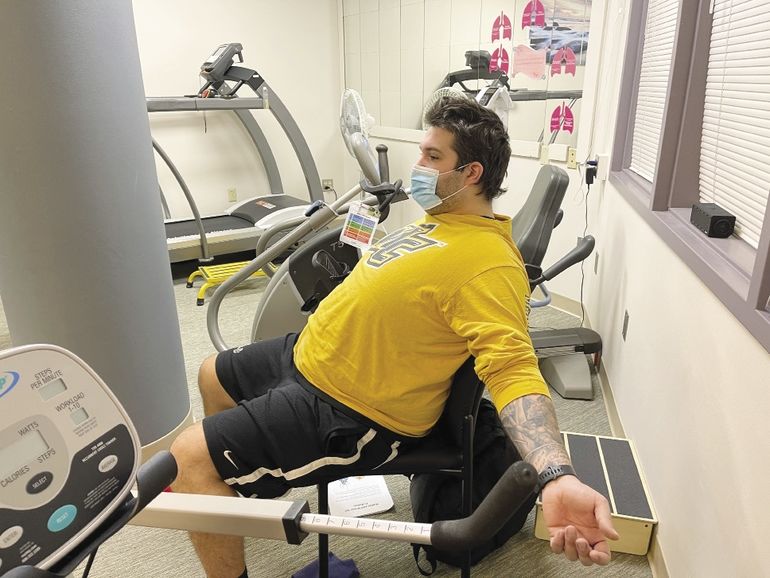Processing Your Payment
Please do not leave this page until complete. This can take a few moments.
-
News
-
Editions
-
- Lists
-
Viewpoints
-
HBJ Events
-
Event Info
- 2024 Economic Outlook Webinar Presented by: NBT Bank
- Best Places to Work in Connecticut 2024
- Top 25 Women In Business Awards 2024
- Connecticut's Family Business Awards 2024
- What's Your Story? A Small Business Giveaway 2024 Presented By: Torrington Savings Bank
- 40 Under Forty Awards 2024
- C-Suite and Lifetime Achievement Awards 2024
- Connecticut's Health Care Heroes Awards 2024
-
-
Business Calendar
-
Custom Content
- News
-
Editions
View Digital Editions
Biweekly Issues
- April 15, 2024
- April 1, 2024
- March 18, 2024
- March 4, 2024
- February 19, 2024
- February 5, 2024
- January 22, 2024
- January 8, 2024
- Dec. 11, 2023
- + More
Special Editions
- Lists
- Viewpoints
-
HBJ Events
Event Info
- View all Events
- 2024 Economic Outlook Webinar Presented by: NBT Bank
- Best Places to Work in Connecticut 2024
- Top 25 Women In Business Awards 2024
- Connecticut's Family Business Awards 2024
- What's Your Story? A Small Business Giveaway 2024 Presented By: Torrington Savings Bank
- 40 Under Forty Awards 2024
- C-Suite and Lifetime Achievement Awards 2024
- Connecticut's Health Care Heroes Awards 2024
Award Honorees
- Business Calendar
- Custom Content
Long-Haulers: Workers with lingering COVID-19 side effects create new challenges for employers
 Photo | Gaylord Specialty Healthcare
Mark Zurlis is a COVID-19 survivor who says he can’t go back to his former career as a custom cabinet maker because of the virus’ impact on his health.
Photo | Gaylord Specialty Healthcare
Mark Zurlis is a COVID-19 survivor who says he can’t go back to his former career as a custom cabinet maker because of the virus’ impact on his health.
Returning to work can be challenging for people who are COVID-19 “long-haulers,” those who have recovered from the virus but are dealing with long-term effects.
Vic Gara of West Granby, the president and CEO of West Hartford aerospace parts manufacturer United Tool and Die Co., has been out of work for almost a year because of lingering symptoms from the virus.
Gara started experiencing severe respiratory symptoms in early March of 2020 at age 56, and his last day of work was March 19. Since then he has endured many ups and downs during several hospitalizations and attempts to return to work.
When Gara was a patient at Hartford Hospital he was on a ventilator for 11 days.
He said his breathing continues to be difficult and he has been participating in post-COVID rehabilitation sessions at Gaylord Specialty Healthcare in Wallingford to try to get back to full health.
“My goal is to go back full time,” he said recently.
As of mid-March, some 300,000 Connecticut residents had contracted COVID-19, and more than 7,800 people had died from the virus. Of the survivors, many have fully recovered and gone back to work without problems. But for some, their lingering health issues have made returning to work problematic.
That’s created both staffing and legal challenges for employers who have to walk a fine line between providing reasonable accommodations to COVID-19 long-haulers while also maintaining productivity.
A recent study by the University of Washington found that 30 percent of people who had only mild cases of COVID-19 had long-term persistent and debilitating symptoms — including fatigue and loss of smell and taste — that lasted for months and made it harder to carry out daily routine tasks.
Flexibility is key
Gara’s situation isn’t unique, and employers should be prepared if their workers experience the same problems, according to legal experts.
Sarah Healey, a labor lawyer with Carmody Torrance Sandak & Hennessey LLP in New Haven, said myriad legal issues can arise with long-haulers’ returning to work.
The goal is to determine what an employer can do to accommodate a worker, Healey said, and what works for one employee may not work for another.
She said there are laws that need to be considered as someone transitions back to work. They include the Americans with Disabilities Act (ADA), which requires reasonable workplace accommodations; the Connecticut Fair Employment Practices Act, which is the state counterpart to the ADA; and the federal Family Medical Leave Act.
An employer needs to look at all options for an employee, Healey said. That can mean allowing a worker to work from home or shorter shifts, and taking leaves of absence.
She said employers are not required to create a position for a worker but can place them in another job if it currently is open.
“I think most employers want to get employees back to work,“ Healey said.
She tells employers they need to engage the individual in an interactive process, in which both parties “go back and forth” to reach a suitable arrangement.
Healey said if an employee is seeking workers’ compensation the individual needs to prove “causation” that he or she got the virus in the workplace. She said the employee would not be covered if the impairment was not from physical injury.
The workers’ compensation issue has recently gotten the attention of state lawmakers. Some progressive Democrats have recently proposed a bill that would make it easier for workers to claim they contracted COVID-19 on the job, making it more likely they file a successful workers’ compensation claim.
No cookie-cutter solutions
Labor lawyer Lawrence Peikes, a partner at Wiggin and Dana LLP in New Haven, said an employer’s “accommodation obligation only kicks in if the individual long-hauler suffers from a disability within the meaning of the ADA or its state law counterpart.”
Peikes said, “If, due to lingering effects of COVID-19, the employee has been advised not to return to the workplace, a determination will have to be made as to whether a work-from-home arrangement, or some other accommodation, such as assignment to an isolated office, is feasible.”
He noted that some jobs require face-to-face interaction with colleagues, clients or patrons, and simply cannot effectively be performed at home.
“But the pandemic has taught us that many jobs can be effectively and efficiently performed remotely, so employers may have to consider a work-from-home accommodation even where it may not be ideal,” Peikes said.
According to Peikes, any accommodations must be tailored to the individual circumstances, so there are no cookie-cutter solutions.
“The key for employers is to be flexible and make a sincere effort to identify an accommodation that works for all parties,” Peikes added.
Diane C. Mokriski, human resources counsel for the CBIA said: “Employers seem nervous about asking questions of their employees. That’s the biggest mistake an employer can make.”
The concept of COVID long-haulers “is brand new,” Mokriski said. “Those people will be found to have a disability,” under the ADA, which requires a reasonable accommodation for the worker.
Employers need to ask their employees what post-COVID symptoms they are experiencing, she said, which involves an interactive process between both parties.
Mokriski said in addition to improving communication, employers need to become “more creative, more flexible” when dealing with the issue of long-haulers returning to work.
Helping people rejoin the workforce
Physiatrist Dr. Jerrold Kaplan is director of Gaylord Specialty Healthcare’s Outpatient COVID Recovery Program, which has helped survivors like Gara deal with the residual effects of the virus.
“COVID has created a unique challenge [as far as patients] returning to work,” Kaplan said in a recent interview.
The disease can cause difficulty breathing, shortness of breath and inflammation of the heart, muscles and nervous system. Other issues patients can face include neuropathy, achy joints, brain fog, anxiety and depression. Kaplan said survivors may experience cognitive difficulties.
“COVID attacks the whole body,” Kaplan said. “I’m seeing a lot of common factors, such as fatigue and generalized weakness.”
He said even “extraordinarily fit” patients will exhibit “severe exercise intolerance” that makes it hard for them to get back to work.
At Gaylord, patients recovering from COVID receive a variety of therapies to help in their recovery and rehabilitation.
Kaplan says when patients are suffering from fatigue they need to transition to the workplace by returning part time “with modifications.”
He advocates for individuals who have survived COVID in their quest to return to work and he says employers need to accommodate them.
Gara participates in Gaylord’s COVID survivors’ support group that meets every other Tuesday via Zoom. He said there are more than 100 COVID survivors who are or have been members, and he is among a core group of about 10.
Working through his recovery symptoms has been “a huge relief,” Gara said, because it validates his experience by knowing others have been in the same position.
Getting back to work
Another long-hauler, Mark Zurlis, survived a severe case of COVID this winter, but because of the toll the virus took on him physically he now needs to start a new career.
Zurlis, 27, of Wallingford said he’s still having breathing problems. He had been employed as a custom cabinet maker but can no longer do that work.
“I have to start a new job because [I can’t be around] the sawdust and the chemicals in the paint we use,” Zurlis said.
He described his life as “chaotic” since getting married on Nov. 7.
“I went on my honeymoon, came back, worked for a week-and-a-half, and then got COVID,” Zurlis said.
After not feeling well and testing positive, he quarantined for two weeks. But he said his illness “got progressively worse. I had no relief in December, and my breathing started to deteriorate.”
Zurlis said his blood pressure “went through the roof.” He now takes medication to control it and has been treated twice in an emergency room.
His condition has been improving since he started participating in post-COVID pulmonary rehabilitation sessions twice a week at Gaylord Specialty Healthcare.
“I definitely feel much better now, but it’s a long process,” he said.

2022 Giving Guide
This special edition informs and connects businesses with nonprofit organizations that are aligned with what they care about. Each nonprofit profile provides a crisp snapshot of the organization’s mission, goals, area of service, giving and volunteer opportunities and board leadership.
Learn more
Subscribe
Hartford Business Journal provides the top coverage of news, trends, data, politics and personalities of the area’s business community. Get the news and information you need from the award-winning writers at HBJ. Don’t miss out - subscribe today.
Subscribe
2024 Book of Lists
Delivering Vital Marketplace Content and Context to Senior Decision Makers Throughout Greater Hartford and the State ... All Year Long!
Read Here-
2022 Giving Guide
This special edition informs and connects businesses with nonprofit organizations that are aligned with what they care about. Each nonprofit profile provides a crisp snapshot of the organization’s mission, goals, area of service, giving and volunteer opportunities and board leadership.
-
Subscribe
Hartford Business Journal provides the top coverage of news, trends, data, politics and personalities of the area’s business community. Get the news and information you need from the award-winning writers at HBJ. Don’t miss out - subscribe today.
-
2024 Book of Lists
Delivering Vital Marketplace Content and Context to Senior Decision Makers Throughout Greater Hartford and the State ... All Year Long!
ABOUT
ADVERTISE
NEW ENGLAND BUSINESS MEDIA SITES
No articles left
Get access now
In order to use this feature, we need some information from you. You can also login or register for a free account.
By clicking submit you are agreeing to our cookie usage and Privacy Policy
Already have an account? Login
Already have an account? Login
Want to create an account? Register
Get access now
In order to use this feature, we need some information from you. You can also login or register for a free account.
By clicking submit you are agreeing to our cookie usage and Privacy Policy
Already have an account? Login
Already have an account? Login
Want to create an account? Register






0 Comments